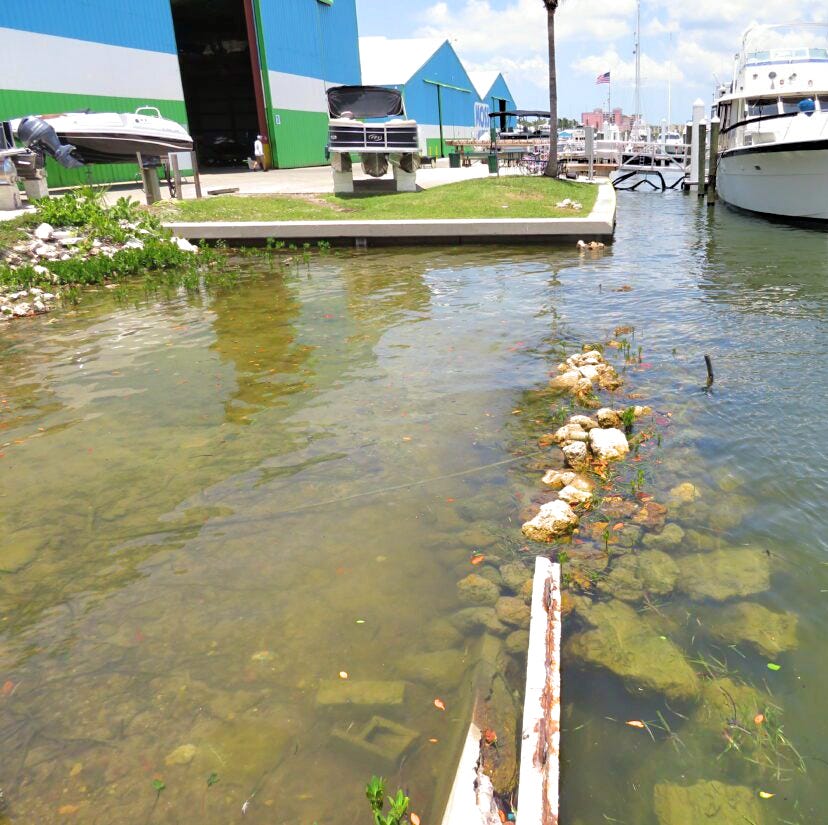Arches Bayfront Proposal: A Potential Economic Booster for Fort Myers Beach Stalled
Strategic Missteps at LPA Meeting Threaten Moss Marina's Transformation
By Richard Luthmann
The recent proceedings at the Fort Myers Beach Local Planning Agency (LPA) highlighted the ongoing challenges Ben Freeland and his team faced to transform Moss Marina into the Arches Bayfront, a sprawling 400-room luxury hotel project. Despite the potential to significantly bolster the local economy, the developers stumbled, failing to secure the necessary backing during the crucial LPA meeting—a result that is nothing short of a strategic misstep.

Freeland’s vision for the Arches Bayfront is expansive. He has proposed constructing three hotels on the site. Two would offer mid-range and extended-stay options with 150 rooms each and rise to six stories. The third, a boutique hotel, would be smaller, with 100 rooms and five stories. Such a development could redefine FMB, offering economic opportunities and enhancing the quality of life for residents and visitors alike.
Fort Myers Beach desperately needs revitalization, especially after Hurricane Ian devastated the local hotel inventory.
"We're nowhere near the hotel room inventory we were before Ian," stated Jacki Liszak, President of the Fort Myers Beach Chamber of Commerce. "Even if the Arches Bayfront project gets approved and built, we will still have over 500 hotel rooms below where we were pre-Ian, most of which are smaller hotels and short-term rentals that have not been rebuilt and face challenges."
Last year, Freeland engaged the public in a discussion about the redevelopment and gathered feedback online. Responses highlighted traffic concerns for the downtown area. In response, Freeland integrated features into the development plan, including initiatives to welcome water ferries, water boats, kayaks, and charter boats, emphasizing enhancing water ferry or water taxi services to improve access to and from the island.
Freeland and his group changed the plans based on community feedback. The recent redevelopment plans would transform the four-acre bayfront property overlooking Matanzas Pass into a vibrant public space. It includes a 1,000-foot linear park extending from the property to local landmarks like Snug Harbor Waterfront Restaurant, Bayside Park, and Nervous Nellie’s. Along this baywalk, Freeland plans to introduce areas for vendors and is considering additional amenities such as restaurants and shops. Freeland has discussed coordinating these services with other local businesses and marinas to ensure efficient integration and operation.
Freeland appears to have done the work and listened. However, successful urban development requires good ideas, meticulous planning, and community engagement. During the LPA meeting, the developers' apparent lack of organized community support was at the heart of the issue.
There is significant backing for the project, as evidenced by the sentiments of local business owners—one of whom noted, "Freeland should get the approval. We need to rebuild, and putting up even more red tape is not the answer." But this support was conspicuously absent when it mattered most. The opposition, in contrast, was well-prepared and vocal, showcasing a parade of residents who lined up against the proposal.
This lack of presence from supporters could have swayed the LPA's decision, ultimately denying the request for a Future Land Use Development Map Amendment by a vote of 4-2. The Town Staff's recommendation to deny the request, citing that the proposed change “is not clearly in the public interest,” further compounded the developers' woes.

For Freeland, the next steps involve presenting the plan directly to the Town Council, which will make the final decision on the project. Here, Freeland cannot afford a repeat of the LPA's meeting outcome. A source close to the Town Council critiqued the initial approach, saying it “needs work.”
"They can't rely on the fact that they're community people alone. Their opposition lined up a dozen people [at the LPA] against them. There is definite support for the project. They should ‘clear the runway’ and make their supporters heard as loudly as their detractors were," the source said.
The source continued, "Plus, we asked for a traffic impact study, and to date, I haven't seen one. All of this is enough to move anyone from a solid 'Yes' to a 'Wait and See.' "
Critically, the developers must rally those who stand to benefit from the project and address the concerns raised. Traffic, always a touchstone issue in urban development, needs particular attention. A thorough traffic study could clarify the impact and demonstrate the developers' commitment to addressing community concerns. The FMB Chamber said it is important for the traffic issue to be further investigated to discern its actual effects.
"It looks like most of the additional traffic is contractors. That isn't permanent traffic. It's clear on Sunday afternoons when there's nowhere near the volume as there is during the week. A study would be helpful," Liszak said.
Moreover, the developers should highlight the integration of public feedback into the project's planning stages to create a more robust proposal. For example, the idea of incorporating a water ferry-friendly development resulted from public consultations, indicating that community input has significantly shaped the project's scope and execution.

While the potential benefits of the Arches Bayfront project are significant, the path to realization requires strategic alignment with community expectations and regulatory frameworks. Freeland and his team must refine their approach, bolster public support, and transparently address concerns to ensure the project not only proceeds but also enhances FMB in a manner that benefits all stakeholders.
The Town Council meeting represents a critical opportunity that cannot be squandered. Freeland must step up and ensure his vision for the Arches Bayfront resonates with investors and the people of Fort Myers Beach.



